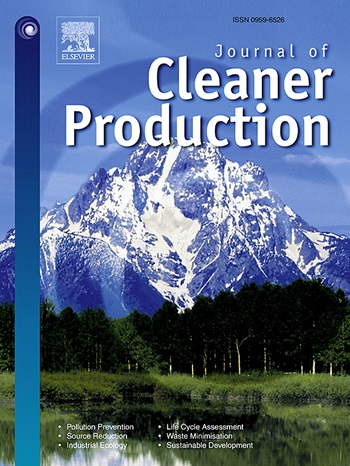Conceptualizing green dynamic capabilities as a two-path model: Evidence from Danish manufacturing firms
IF 9.7
1区 环境科学与生态学
Q1 ENGINEERING, ENVIRONMENTAL
引用次数: 0
Abstract
The theory of “dynamic capabilities” is often used to explain firms’ transition towards greener production, typically under the name of “green dynamic capabilities” (GDCs). Such studies typically conceptualize GDCs as a single construct and, in rarer cases, as a group of noninteracting constructs. This study takes a different approach by conceptualizing GDCs as a set of constructs organized under three stages during which dynamic capabilities are applied (i.e., “sensing”, “seizing”, and “transforming”). The constructs “market orientation” (MO), “sustainability orientation” (SO), “technological orientation” (TO), and “green process innovation” (GPI) are used as proxies for GDCs to develop a model describing two distinct paths from MO to GPI. The model is investigated through a survey of Danish manufacturing firms (n=337). The results confirm the hypotheses that SO and TO mediate the relationship between MO and GPI. Interestingly, there is no support for a direct relationship between MO and GPI, which implies that SO and TO fully mediate this relationship. Second, the results show that both mediation relationships are associated with competitive advantages in the form of increased product quality, whereas no support is found for effects on lead times and costs. Overall, the study adds to the understanding of GDCs by conceptualizing them as a set of constructs organized under three stages during which different GDCs are applied. This conceptualization offers future research a more nuanced operationalization of GDCs, which may lead to additional insights into their conditions and effects.绿色动态能力概念化为双路径模型:来自丹麦制造企业的证据
“动态能力”理论经常被用来解释企业向绿色生产的转变,通常被称为“绿色动态能力”(gdc)。此类研究通常将gdc概念化为单个构念,在极少数情况下,将其概念化为一组非相互作用构念。本研究采用了一种不同的方法,将gdc概念化为一组分为三个阶段的结构,在这三个阶段中,动态能力被应用(即“感知”、“抓住”和“转换”)。以“市场导向”(MO)、“可持续性导向”(SO)、“技术导向”(TO)和“绿色过程创新”(GPI)为代表,构建了一个描述从MO到GPI两条不同路径的模型。通过对丹麦制造企业(n=337)的调查,对该模型进行了调查。结果证实了SO和TO在MO和GPI之间起中介作用的假设。有趣的是,没有证据支持MO和GPI之间存在直接关系,这意味着SO和TO完全介导了这种关系。第二,结果表明,这两种中介关系都以提高产品质量的形式与竞争优势相关,而对交货时间和成本的影响没有发现支持。总体而言,该研究通过将gdc概念化为按三个阶段组织的一组结构,从而增加了对gdc的理解,在这三个阶段中,不同的gdc被应用。这一概念为未来的研究提供了更细致入微的gdc操作方法,这可能会导致对其条件和影响的进一步了解。
本文章由计算机程序翻译,如有差异,请以英文原文为准。
求助全文
约1分钟内获得全文
求助全文
来源期刊

Journal of Cleaner Production
环境科学-工程:环境
CiteScore
20.40
自引率
9.00%
发文量
4720
审稿时长
111 days
期刊介绍:
The Journal of Cleaner Production is an international, transdisciplinary journal that addresses and discusses theoretical and practical Cleaner Production, Environmental, and Sustainability issues. It aims to help societies become more sustainable by focusing on the concept of 'Cleaner Production', which aims at preventing waste production and increasing efficiencies in energy, water, resources, and human capital use. The journal serves as a platform for corporations, governments, education institutions, regions, and societies to engage in discussions and research related to Cleaner Production, environmental, and sustainability practices.
 求助内容:
求助内容: 应助结果提醒方式:
应助结果提醒方式:


